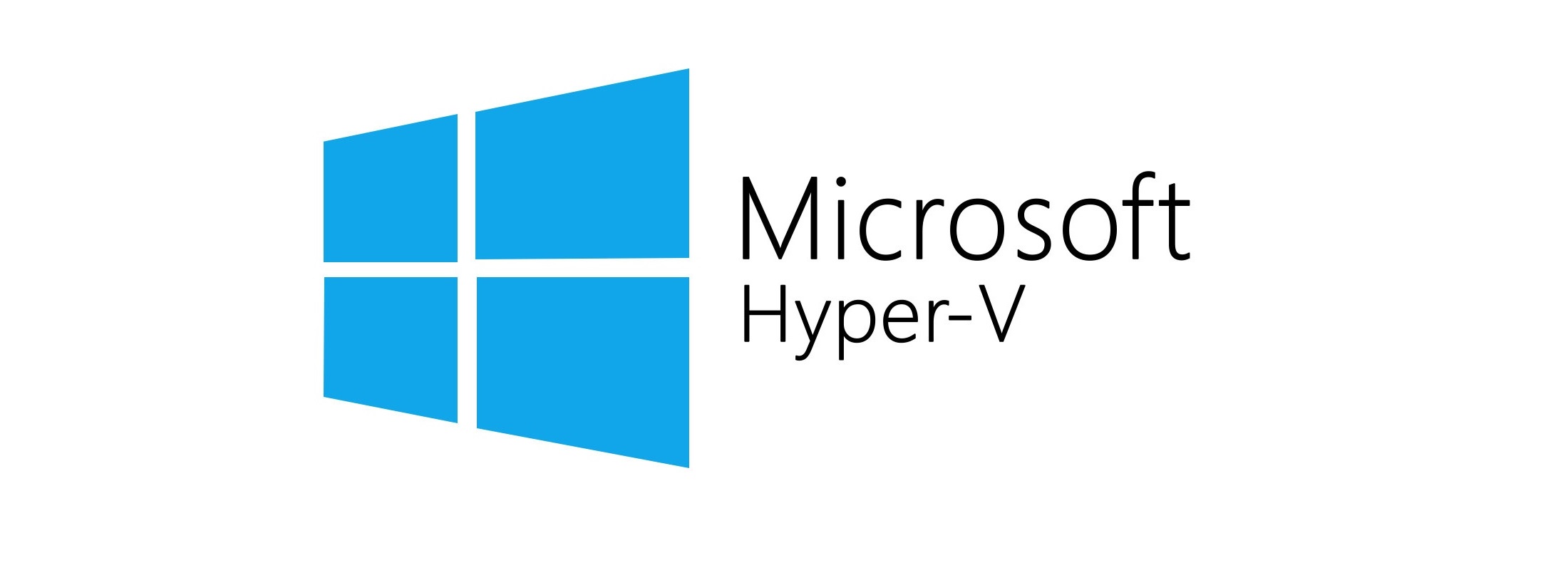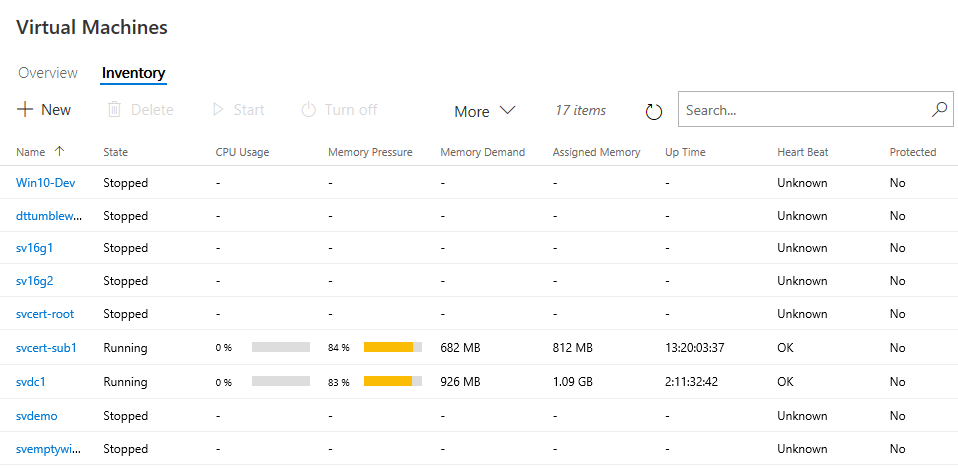Save to My DOJO
It’s that time of year again. I’m of course talking about that time of year when most IT Pros are huddled in their homes spending time with family and hopefully not beating their heads against servers that went down over the holidays. While I should honestly be doing the same, I always like to reflect on things around the holidays. I find it helpful to sum up the year we’ve had and to also think about what lies ahead in the coming new year.
We’ve had an amazing year here on the Altaro Hyper-V Hub. We’re so thankful to you, our readers, for your support. There have been a ton of new exciting technologies and features to talk about, and there is much more to come. While Hyper-V isn’t as “front and center” as it once was (more on this later), it remains a core piece of the Windows Server stack, and as such we’ll have much to talk about over the coming 12 months. However, before we talk about that, let’s take a little bit of time and reflect on where we’ve been.

Hyper-V in 2017 – A Year-End Review
2017 was an interesting year overall in the Microsoft Space. I attended many Microsoft focused events over the last 12 months, including Inspire and Ignite, and I now finally have the sense that the cloud is truly taking things over. That is maybe not in the sense that every workload will reside in a public cloud, but more in the sense that every workload out there will be hosted in some sort of cloud, whether it’s public, hybrid or private. Sure, people have been saying that for the last several years, but this is the first year where I felt there was no denying it. Yes, people are still running on-prem, and there will be those that are running on-prem for a long time yet, but Microsoft’s Cloud Strategy is coming in hot and it’s becoming easier and more economical than ever to run things in a cloud, and Microsoft Azure Stack is one of the drivers of this change.
Azure Stack is in the House
Again, one of the key pieces of technology that is leading the charge in this movement is Microsoft Azure Stack (MAS). We’ve talked about Azure Stack in a few articles over the past months and we get a lot of comments stating it has nothing to do with Hyper-V. Well the folks saying that are both right and wrong. They’re wrong in the sense that Hyper-V is in the stack and is a core piece of it. Yet, they are right at the same time because Hyper-V is becoming so abstracted in some of these new platforms that we no longer have direct access to it. the ARM management layer is used in Azure Stack to interface with Hyper-V and many of the decisions and configurations that we would take on ourselves are simply automated and taken care of according to best practices. While it does amount to some loss of control, what this really allows us to do is provision workloads faster, and it has the added benefit of being a deployment mechanism that is the same as it is on public Azure.
Take those ideas and now imagine a world where you have large enterprises, and regional service providers hosting their own Azure Stack instances. Now you literally have Azure and its management stack everywhere. Enterprise companies will use their local Azure Stack, and the SMB and SME will start a move to regionally hosted Azure Stack instances if they aren’t comfortable with the public cloud. Again, you’ll have the organizations that will still run on-prem, but the option for cloud will be everywhere, and that is really what Microsoft has done with Azure and MAS in 2017.
2017: The Year of the Container?
If I think about other disruptive technologies from over the last 12 months, another one that sticks out to me is containers. Containers have been around for some time in the form of docker and the open source community, but Microsoft has somewhat driven them into the mainstream this calendar year. If you’re a Hyper-V admin and you’re not familiar with containers, you should take a look. You can think of a container as an ultra-slim VM. It contains your application and just the supporting software needed for said app. The container then relies on the underlying host OS for OS related functions, so they aren’t as isolated as traditional VMs, but due to their makeup you can get much higher density of containers per host than VMs.
I attended a session (recording below) at Microsoft Ignite regarding containers. MetLife, a large insurance company here in the states had reduced a significant chunk of their infrastructure by moving over the containers, and all I could think of was: “I’m watching what VMs did to physical machines all those years, all over again!”. It was that moment where I saw that containers weren’t going away, and they and server-less computing are here, now.
Finally, I also had the pleasure of talking with Taylor Brown who heads up containers at Microsoft. I met with Taylor at Ignite and we talked about what is new for containers in 2017 and where he sees them going in the future. You can view the video below
Hyper-V Continues to Get Enhancements
This wouldn’t be a year-end review article on a Hyper-V blog without some mention of Hyper-V right? I’ve been talking about Containers and Azure Stack, but Hyper-V saw some big improvement this year, the largest of which I think is Project Honolulu.

Project Honolulu is the new upcoming management experience for on-premise workloads, including Hyper-V and it’s supporting infrastructure. The community has been asking Microsoft for an updated on-prem management experience for years, and they have delivered. While relatively new and web-based, Honolulu is a strong utility for so young a management tool, and if you haven’t had a chance to check out Project Honolulu yet, I highly encourage you to check out Eric’s article on the subject!
Other notable enhancements are:
- Linux Shielded VMs
- Linux Containers running as Hyper-V Containers
- Hardware Virtualization with pass-through for GPUs
- Persistent memory support in VMs
- A number of Client Hyper-V quality of life improvements
What Comes Next in 2018?
Looking ahead is always subjective right? I won’t pretend to be the definitive expert on what happens in the Microsoft space over the next 12 months. However, I have been in this industry and in Microsoft circles long enough to have a pretty good gut feeling about where things are headed. So where do I think we’re headed?
Microsoft Will Continue to Push Cloud
This one is a no-brainer right? Microsoft will continue to push Azure adoption sure, but they will also be enabling service providers and enterprises to use Microsoft Azure Stack in an economical way. Like most new Microsoft technologies MAS was intended for the huge enterprise, and is now in a place where it can be scaled down to 4 nodes. This makes the entry point more reachable to more organizations and will enable the proliferation of that Azure anywhere idea I was talking about earlier. Don’t want to use public Azure? No problem! You’re about to have a whole lot of new options for where you place that “cloud” workload!
The Recent Net-Neutrality Vote Could Impact the Cloud
If you have eyes and ears, you’ve likely heard that the FCC stripped Net Neutrality of its title 2 protections. With these protections repealed, ISPs now have the ability to tinker with, and charge more for certain types of traffic. As such, with so much moving to the cloud, I could potentially see a world where you need to buy the “Public Computing” package with your ISP to reach public cloud services such as Azure. As such, this could limit Azure’s explosive growth to date, depending on the amount of tinkering done by ISPs.
More options if you run VMware
Microsoft and VMware really have an on again/off again relationship. You likely heard the news that Microsoft will provide the ability to run VMware workloads in Microsoft Azure. After the initial announcement came out, VMware stated they would deny support to such deployments, but I saw an article just the other day that they’re suddenly fine with it now. Whatever the outcome, it looks like we’re going to live in a world we’re you can run VMware workloads natively inside of Azure, which will ultimately lead to more Azure service adoption. Not surprising!
Hyper-V will Continue to be Abstracted
With containers, Azure Stack and server-less computing, Hyper-V is becoming so abstracted these days, that we don’t even have access to it in some cases. I’ll be blunt. The hypervisor has become commoditized. It’s no longer this niche, disruptive technology. As a result I think you’ll start to see some skill-sets moving away from Hyper-V and onto other technologies and platforms that contain Hyper-V under the hood, such as MAS and Azure.
Our Top 10 Posts from 2017
To finish up our final 2017 article, I’d like to post a list. As I said, we had a great year on the Hyper-V blog, and we had a number of popular posts. We’ve compiled a list of those posts below for your reading pleasure. Enjoy!
- Client Hyper-V vs. VirtualBox
- CentOS Linux on Hyper-V
- How to run Kali Linux on Client Hyper-V
- Hyper-V Differencing Disks Explained
- Comparing Hyper-V Generation 1 and 2 Virtual Machines
- 4 Ways to Transfer File to a Linux Hyper-V Guest
- Standard and Production Checkpoints in Hyper-V 2016
- Complete Guide to Hyper-V Networking
- Enhanced Session Mode in Client Hyper-V
- 6 Hardware Tweaks that will Skyrocket your Hyper-V Performance
Wrap-Up
With that, I can wrap up our 2017! We’ve enjoyed our year here at Altaro, and we’re looking forward to another fantastic year of providing Hyper-V howtos, breaking news, and more community focused content!
Any 2017 highlights or thoughts for the future you’d like to share that weren’t mentioned? Feel free to use the comments section below to let us know.
Happy New Year!


Not a DOJO Member yet?
Join thousands of other IT pros and receive a weekly roundup email with the latest content & updates!








